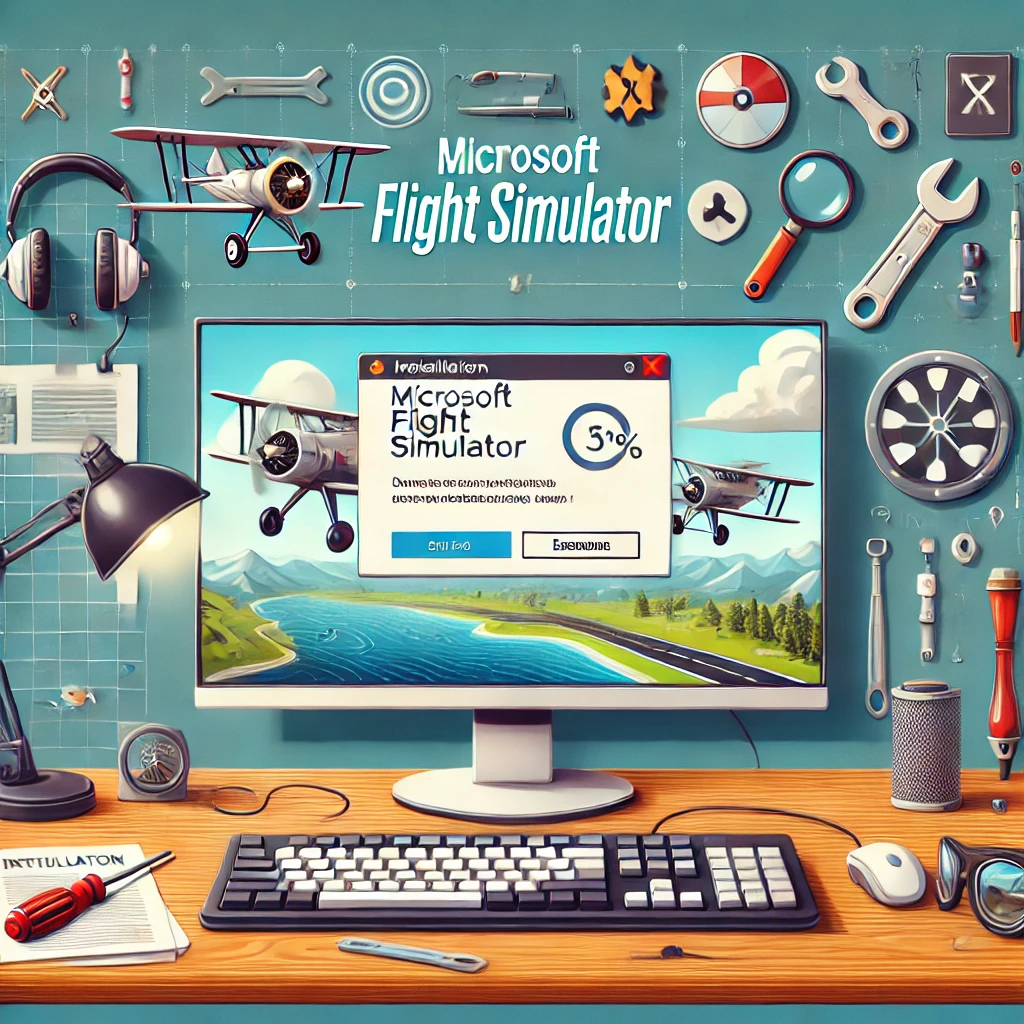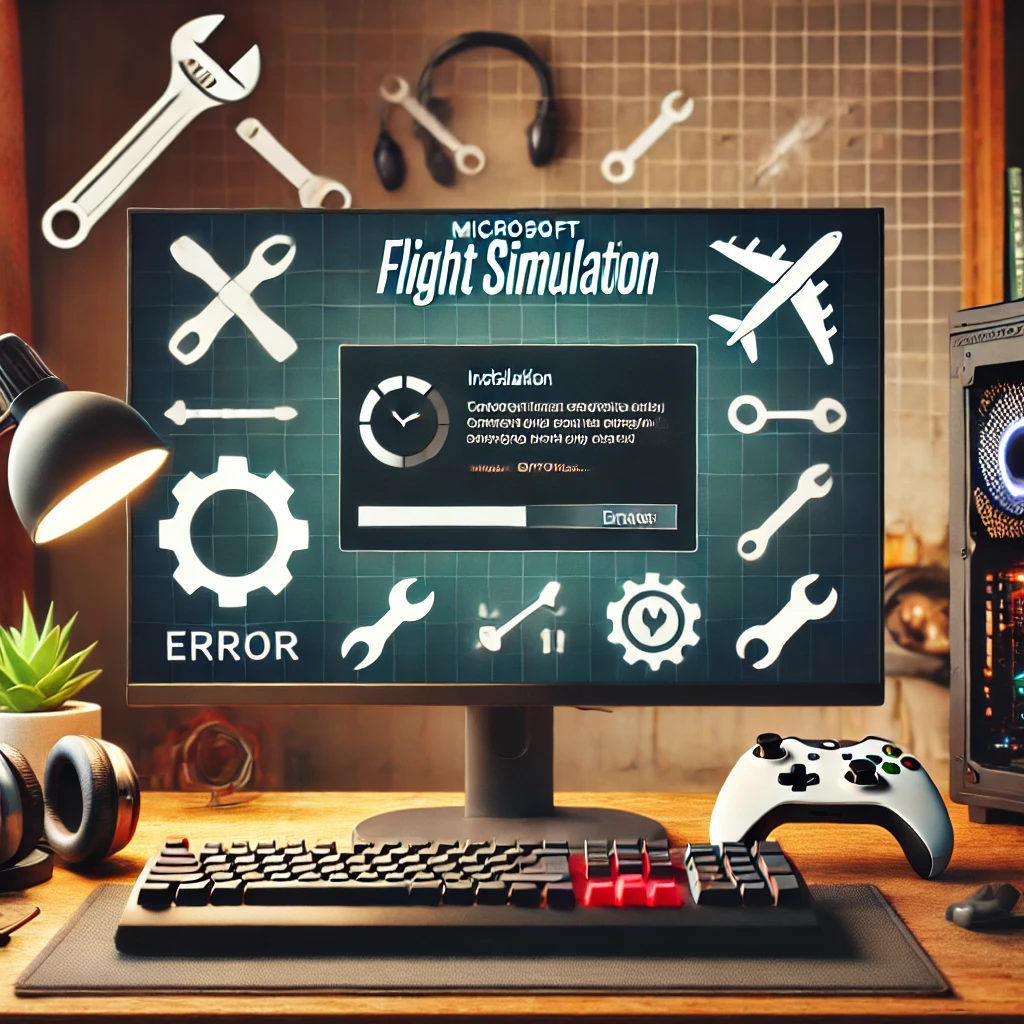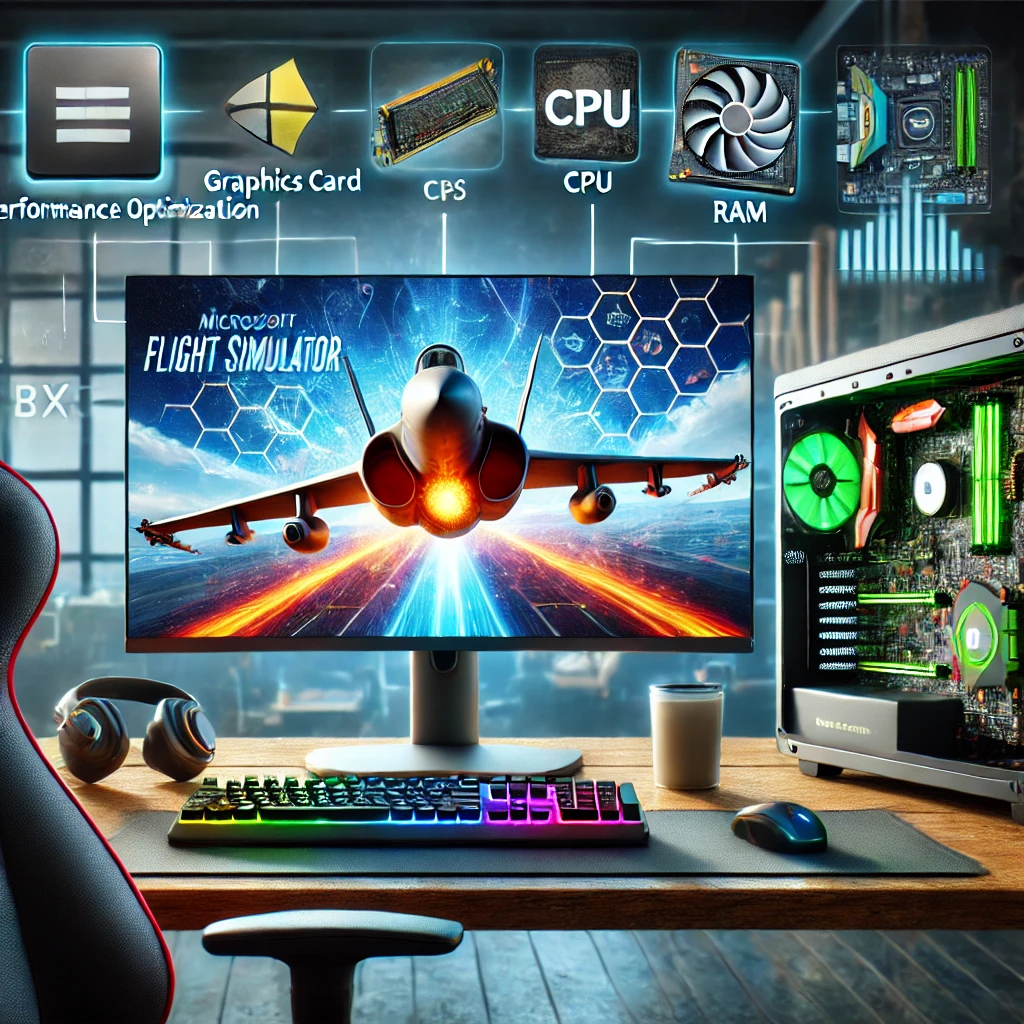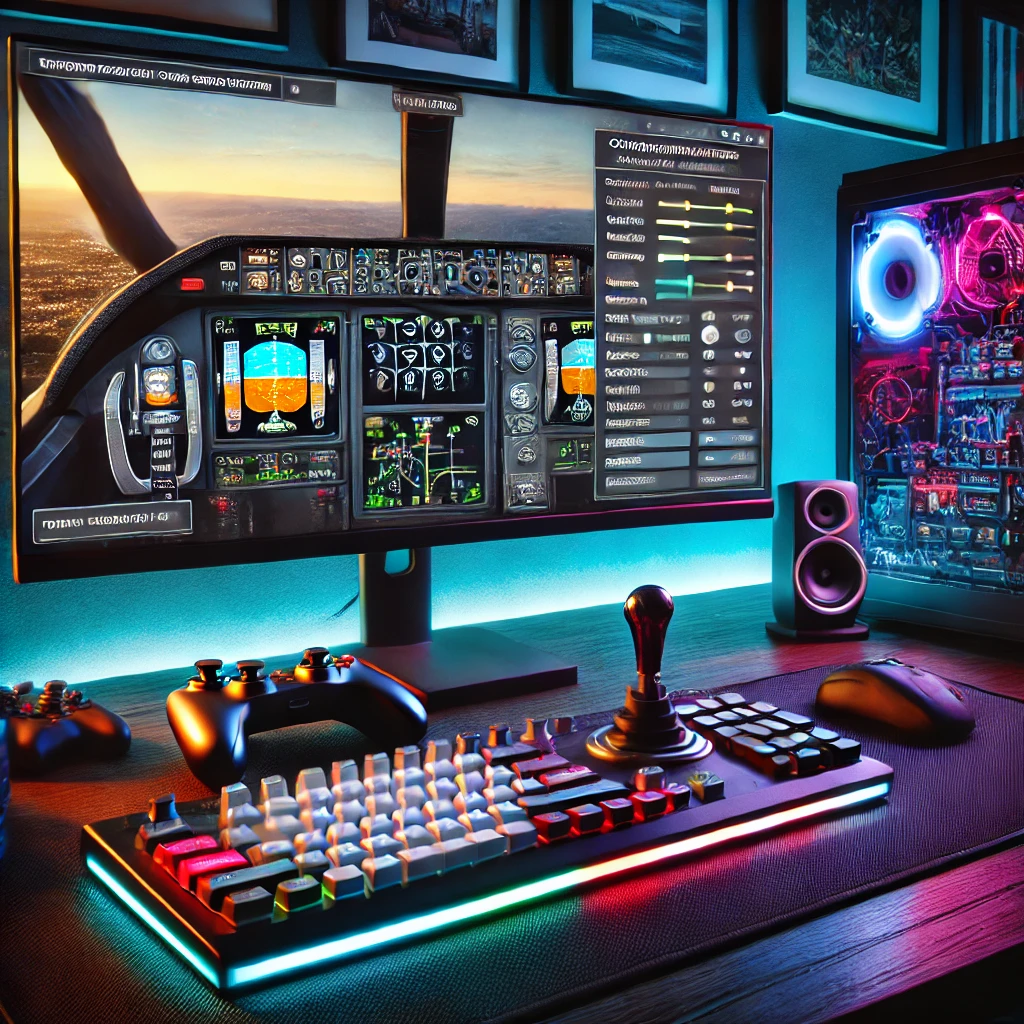Microsoft Flight Simulator Troubleshooting – Overcoming Common Issues and Enhancing Game Performance:

Microsoft Flight Simulator 2020 has revolutionized the flight simulation genre, transcending beyond its breathtaking visuals to offer a deeply immersive experience that mimics real-time flying. Originating in the pioneering days of computer gaming, this simulator has matured through the years into a complex and beloved tool among aviation enthusiasts around the globe. Learn more about the evolution of Microsoft Flight Simulator.
At the heart of its allure is the use of real-world data and satellite imagery to recreate a highly accurate virtual planet. The combination of Bing Maps data and Azure AI contributes to this realistic representation of over 37,000 airports worldwide, photo realistic landscapes, and dynamic weather conditions. It’s a masterpiece of technology that pushes the boundaries of what home computing can deliver. Find out how Microsoft uses Bing Maps and Azure AI in Flight Simulator.
For anyone passionate about aviation, whether budding pilots or seasoned flyers, Microsoft’s simulator isn’t just about flying a plane from one point to another; it’s about embracing the entire aviation spectrum, from respecting air traffic control procedures to understanding the physics of flying in various weather conditions.
It’s no wonder that it’s hailed as a landmark in gaming. The attention to detail and accuracy sets a new standard in simulation titles, providing players a chance to explore the skies like never before. With all this in mind, diving into the settings and features available can help tailor the experience to individual preferences, ensuring a smoother and more enjoyable journey every time you take to the skies.
Common Problems and Error Codes:

Embarking on a journey with Microsoft Flight Simulator 2020 can sometimes be bumpy, with several common issues likely to arise. Recognizing and understanding these challenges can significantly smooth out your simulation experience, which might be hindered by inherent game glitches or constraints from your system’s hardware.
Error codes pop up occasionally and can be quite perplexing for new users. Some typical ones include download errors, installation issues, or even crashing mid-flight. What’s crucial here is decoding what these error messages want to tell you. They often point towards specific issues like missing files, server connection problems, or unsupported software components. Visit Microsoft’s official troubleshooting page for help with error codes.
Hardware limitations are another frequent cause of stuttering and performance drop. Sometimes, the simulator demands more than what the hardware can deliver, leading to frustrating experiences like lag or freezes. Checking the system requirements can give a good sense of whether the system matches the simulator’s needs. Check the system requirements for Microsoft Flight Simulator to ensure compatibility.
Also, the community often discusses issues like game updates causing new bugs or incompatible mods that throw errors. Keeping everything updated and sticking to known stable mods can usually help avoid these problems.
Tackling these common issues often requires a bit of patience and an understanding that every fix helps refine the overall flying experience. With a bit of persistence, exploring the virtual skies becomes the thrilling experience it was always meant to be.
Diagnostic Tools and Preliminary Checks:

Initiating Diagnostic Checks Prior to delving into detailed repairs, conducting a preliminary diagnostic with the built-in tools provided by Microsoft Flight Simulator 2020 is crucial. These tools are instrumental in pinpointing potential issues, guiding you towards understanding and rectifying problems at the outset.
One of the most common issues users face is related to internet connectivity. A stable connection is crucial since the simulation relies heavily on streaming data for its realistic environments. Checking the current server status and ensuring a strong, stable internet connection is a good first step.
System requirements aren’t just a marketing spiel—the simulator won’t run optimally if your PC doesn’t meet them. Confirming your system’s specs align with the game’s needs can prevent many headaches. Checking if there’s enough RAM, a supported graphics card, and a suitable storage space ensures a smoother operation.
Another practical initial step before troubleshooting further is verifying that no other software is causing interference. Sometimes background applications eat up resources that the simulator needs. Identifying and disabling these applications can make a significant difference.
Completing these preliminary checks can often weed out simple issues and prevent unnecessary frustration. Once these basics are covered, it becomes easier to tackle more complex problems.
In-Game Configuration Adjustments:

Adjusting in-game settings can bring about surprising improvements in how Microsoft Flight Simulator runs on your system. Graphic settings, in particular, play a huge role in overall performance. Lowering the graphic details can significantly boost frame rates for smoother gameplay if your system struggles to keep up.
Tailoring your controls and preferences isn’t just about comfort; it can also enhance your flying performance. Customizing control sensitivity and sim settings allows you to have better command over your aircraft, making for a more realistic experience. Experiment with different settings to find what feels just right for your style of flight.
Settings impact not just performance, but also how the game immerses you in the virtual world. Adjusting things like traffic density and weather effects can lessen the load on the hardware. These changes help to maintain a balanced experience, ensuring the game runs smoothly without sacrificing too much of its visual appeal.
Sometimes, it’s the small tweaks that can make all the difference. From calibration to configuration, each setting choice can influence how well different aircraft handle in various scenarios. Taking time to understand these settings means more enjoyable flying, whether navigating through a storm or enjoying a clear sky.
Advanced Troubleshooting Tips:
Engaging in Advanced Troubleshooting When simple solutions fall short, engaging in advanced troubleshooting becomes necessary to resolve the more persistent issues that plague Microsoft Flight Simulator 2020.
A common advanced fix involves updating your drivers. Graphics and hardware drivers are the backbone of a seamless game experience. Regularly checking for updates and ensuring compatibility can resolve crashes and enhance performance.
Sometimes, outdated or incompatible software might conflict with the simulator. Checking your current software and ensuring everything is up-to-date often solves glitches and ensures smoother gaming sessions.
Using logs is another powerful method in advanced troubleshooting. Logs can give you a clearer picture of what the simulator is experiencing and point towards what’s causing unwanted crashes. Knowing what to look for in these logs can guide you towards more targeted solutions.
Persistence is key. Tackling complex issues can be challenging but rewarding. Delving deeper into the software and understanding its nuances often bridges the gap between frustration and enjoyment in your virtual aviation journey.
Where to Find Help and Support:
When you’re stuck with an issue that just won’t resolve, reaching out for help is a wise step. Microsoft Flight Simulator’s large community is one of its greatest strengths.
Online forums and community groups provide a wealth of shared knowledge and solutions. Other players often share their experiences and fixes, making these spaces valuable resources.
There’s also the reliable route of official support. Microsoft’s support channels are designed to address more technical or persistent issues. They offer guidance and troubleshooting articles which might pinpoint the problem you’re dealing with. You can access these resources directly at the Microsoft Flight Simulator Support page
In times when official support is required, having detailed documentation of the problem can speed up the resolution process. Screenshots, error messages, and a log of what’s been tried already can provide support teams with the context they need to help more effectively.
You don’t have to fly solo when it comes to troubleshooting. Whether it’s reaching out to fellow sim lovers or contacting support, help is available to ensure your flights take off smoothly every time.
